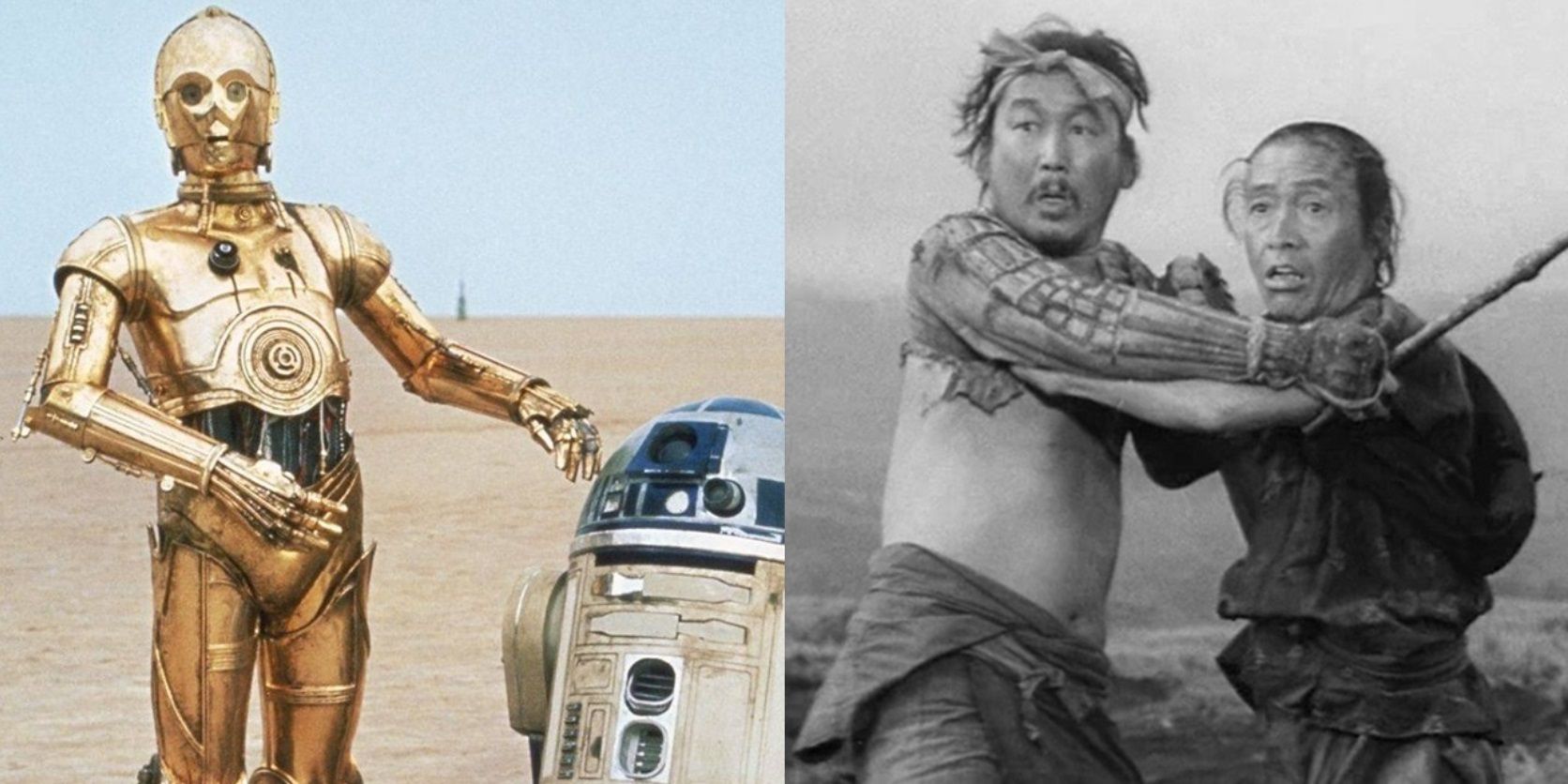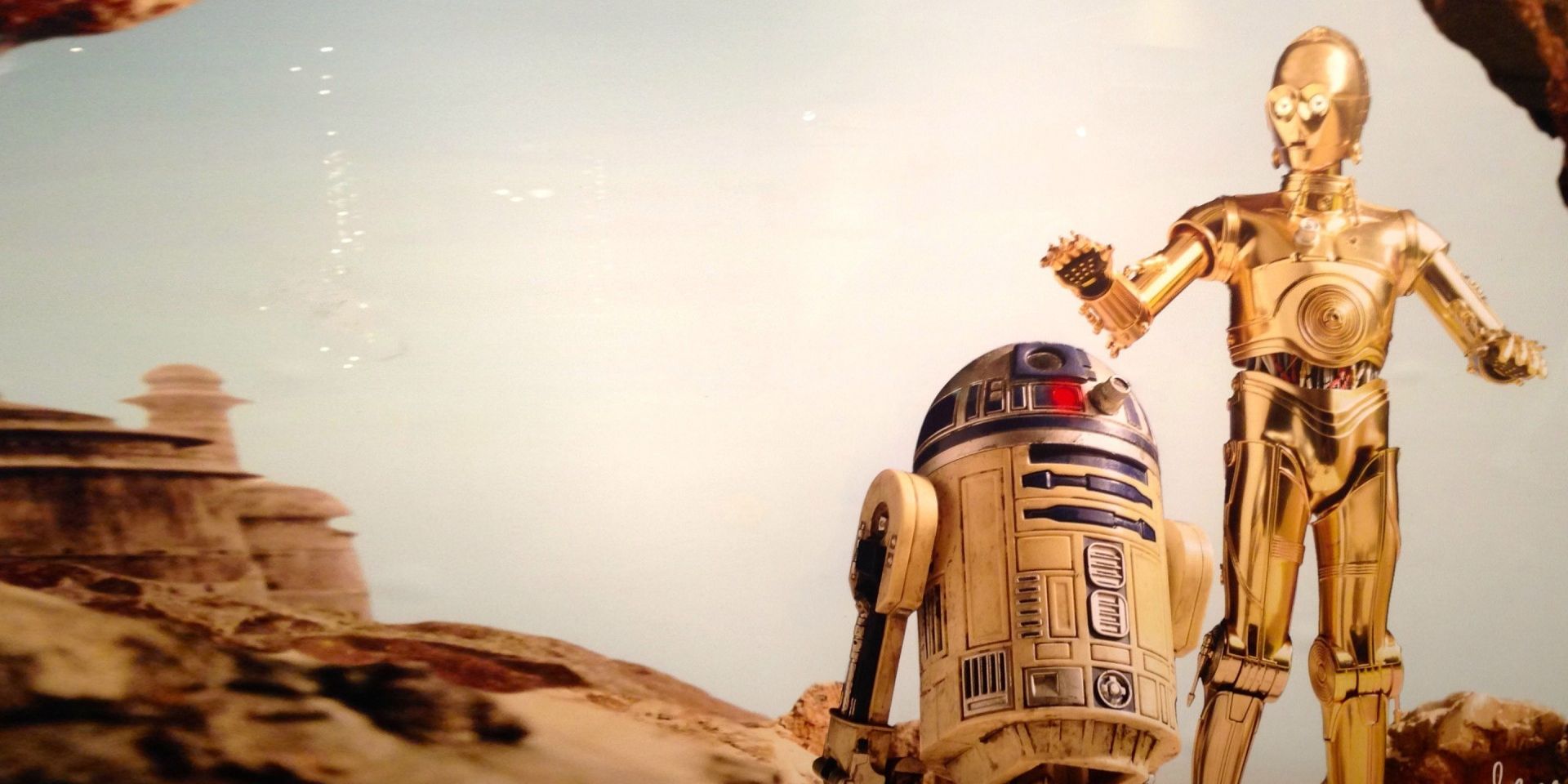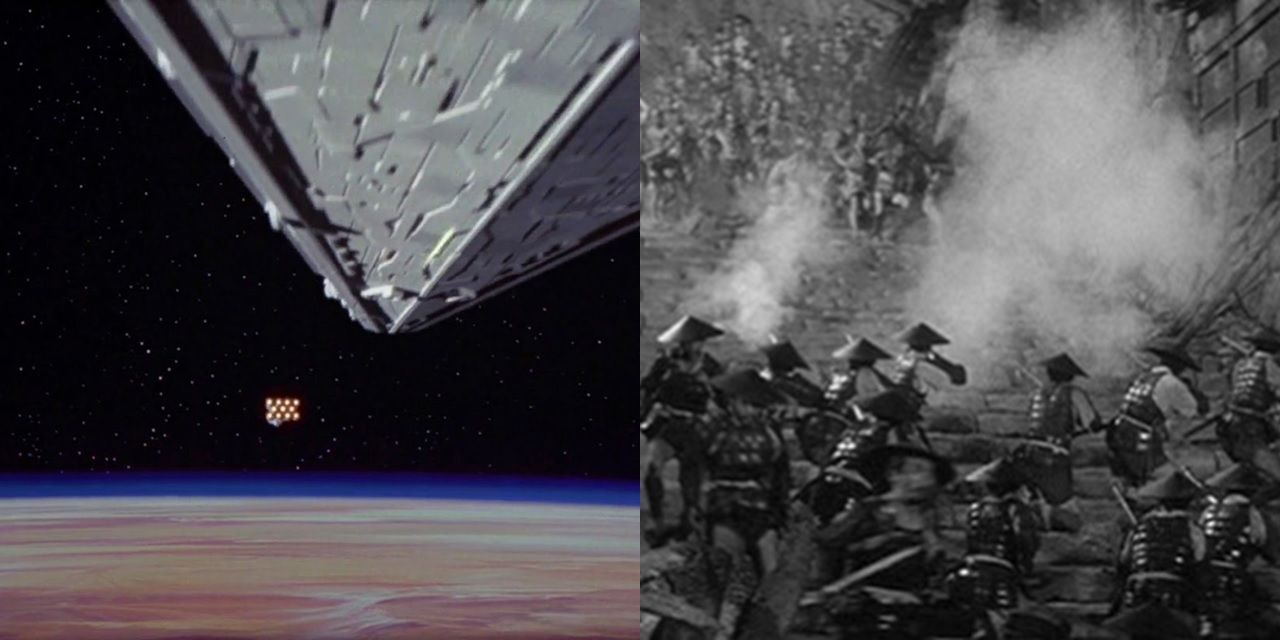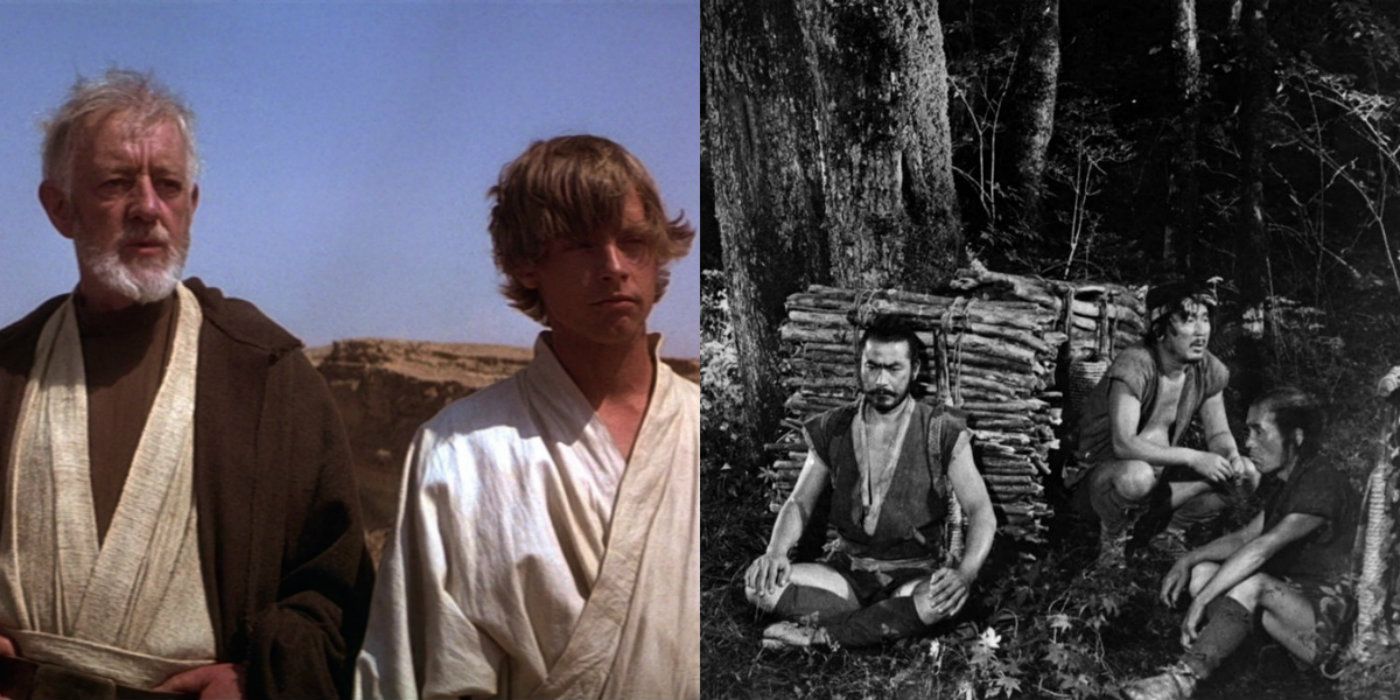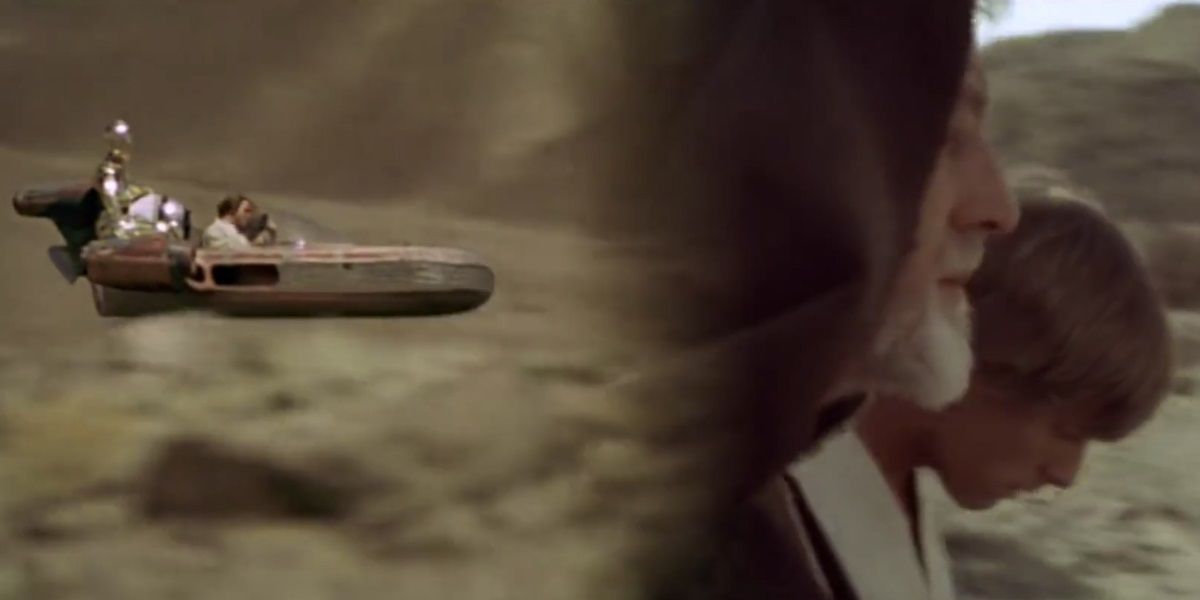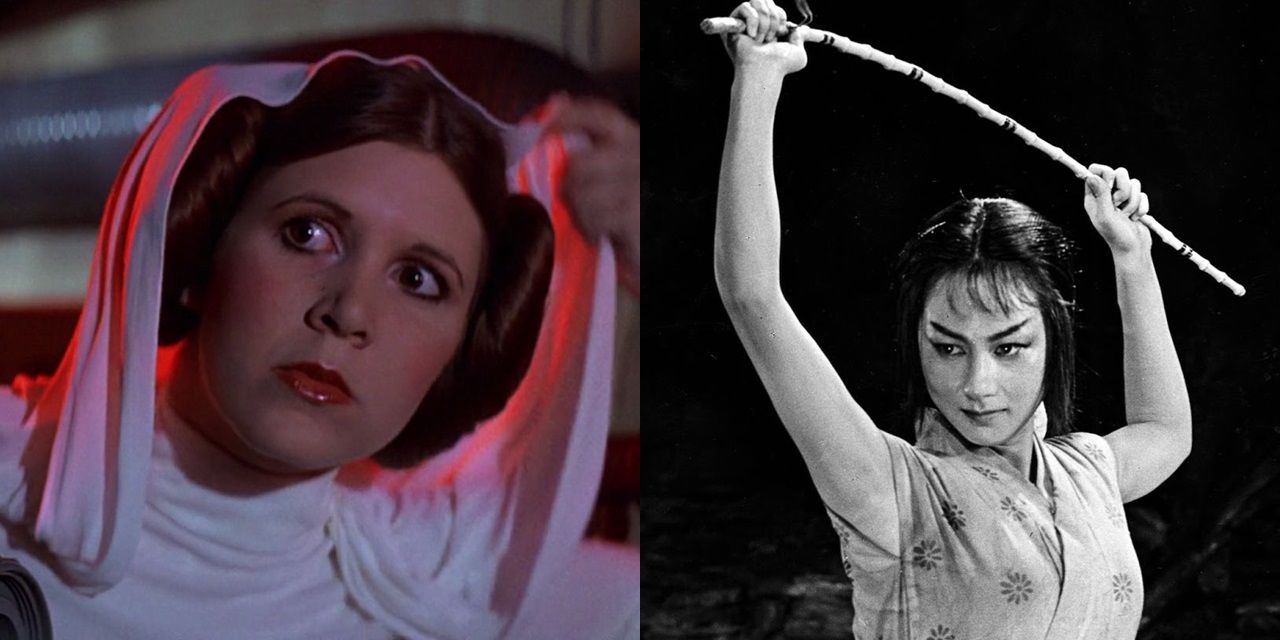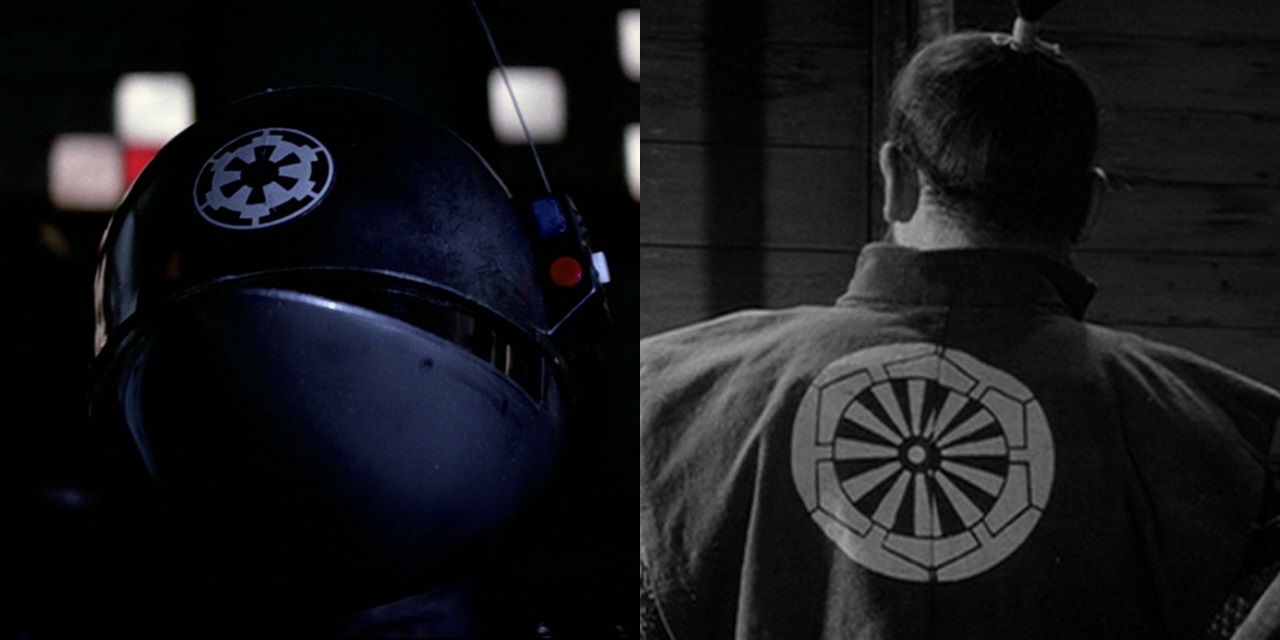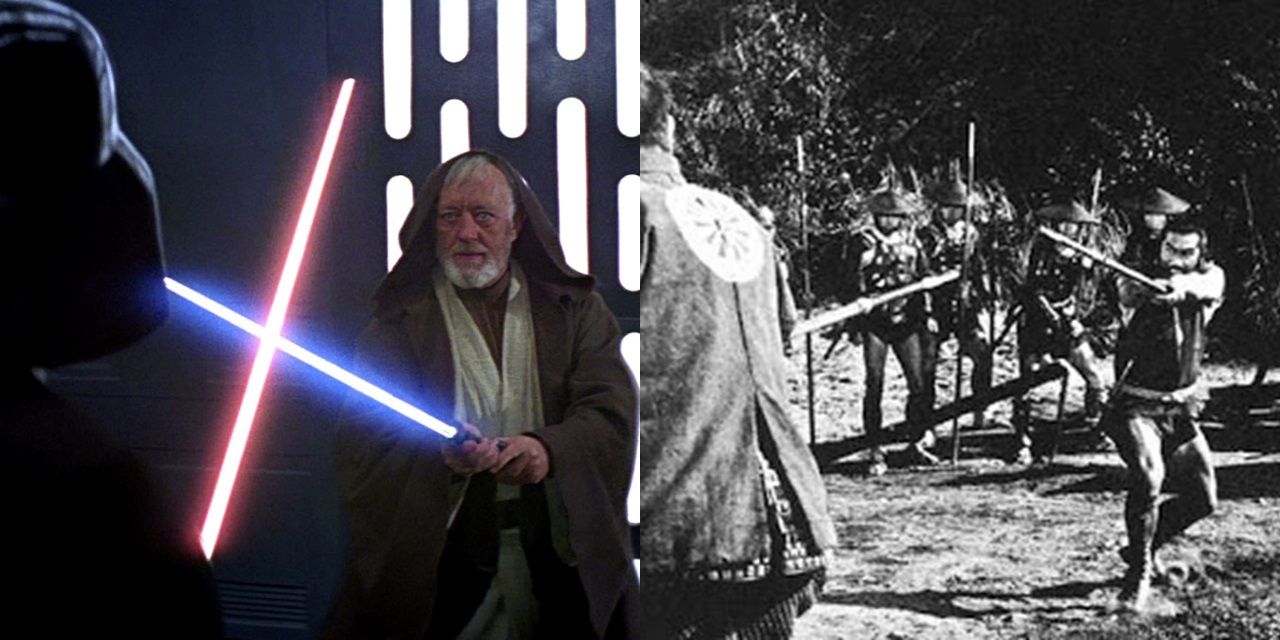When Star Wars hit theaters in 1977, audiences had never seen anything like it. The pure intergalactic escapism offered by George Lucas’ movie made it wholly unique, and, before too long, it had set countless box office records and changed the face of Hollywood. However, despite the fierce originality of Lucas’s cosmic adventure, Lucas drew heavily from various sources of inspiration.
The serialized storytelling was influenced by Flash Gordon, the dusty saloons and shootouts of Tatooine are ripped straight from classic westerns, and Luke Skywalker’s hero’s journey follows the tenets of Joseph Campbell’s “monomyth.” On top of all that, the basic narrative framework was borrowed from Akira Kurosawa’s 1958 samurai masterpiece The Hidden Fortress.
Told Through The Eyes Of Two Lowly Peasants
Kurosawa tells the far-reaching epic tale of The Hidden Fortress through the eyes of two lowly peasants, Tahei and Matashichi. C-3PO and R2-D2, the focus of Star Wars for the majority of its opening act, can be seen as an analog for these characters. In a galaxy far, far away, the equivalent of peasants are droids. People in the Star Wars universe treat droids like commodities, like a fridge or a radio, despite the fact they have distinctive personalities.
While the vast scope of The Hidden Fortress incorporates entire armies fighting for political control and a world-weary war veteran facing his arch-nemesis, the true heroes of the movie are Tahei and Matashichi, just like the true heroes of Star Wars are Artoo and Threepio.
Opening With A Battle
At the beginning of Star Wars, C-3PO and R2-D2 escape from the attack on Tantive IV by taking a pod to Tatooine. At the beginning of The Hidden Fortress, Tahei and Matashichi escape from a similar battle before being swept up in the big adventure.
According to The BBC, George Lucas has said that this is the main inspiration he took from Kurosawa’s movie. “The one thing that really struck me about The Hidden Fortress... was the fact that the story was told from the [perspective of] the two lowest characters. I decided that would be a nice way to tell the Star Wars story.”
A Battle-Hardened Samurai General
While wandering through the wilderness, Tahei and Matashichi come across a battle-hardened samurai general named Makabe Rokurōta, played by Toshiro Mifune. As one might expect, the character of Obi-Wan Kenobi, a veteran of the Clone Wars and one of the galaxy’s last surviving Jedi, was based on Rokurōta.
Mifune appeared in some of Kurosawa’s most acclaimed movies, including Rashomon, Seven Samurai, Throne of Blood, and Yojimbo. Lucas considered Mifune for the role of Obi-Wan, and later for the role of Darth Vader, but, as per The Guardian, he turned down both.
Wipe Transitions
One of the most memorable aspects of the Star Wars saga’s filmmaking is its use of over-the-top scene transitions. Most blockbusters use simple cuts, or possibly a dissolve, but Star Wars movies use all kinds of wipe transitions.
While these transitions are used to evoke the pulpy fun of the serials that initially inspired Lucas to create the saga, the wipes themselves are taken from The Hidden Fortress and other Kurosawa movies.
A Rebellion Led By A Princess
Not only do Star Wars and The Hidden Fortress both revolve around princesses in danger, but, in both cases, the princess is the leader of a rebellion. In Star Wars, of course, this character is Leia Organa, played by the legendary Carrie Fisher. In The Hidden Fortress, it’s Princess Yuki, played by Misa Uehara.
In one scene in The Hidden Fortress, a slave girl acts as a decoy for the princess and the princess takes the slave girl’s place. Lucas later incorporated this plot point into The Phantom Menace, in which Padmé uses a decoy and disguises herself as a handmaiden.
The Imperial Crest
The villains in The Hidden Fortress are the Yamana clan, who are essentially Kurosawa’s version of the Galactic Empire. Unlike the Empire, the Yamana clan actually existed in real life, but Kurosawa fictionalized them a little. In the movie, he pits the Yamana clan against the Akizuki clan, but these clans were based in different parts of Japan (Kyushu and Honshu, respectively). There’s a historical context for the Empire, too, as Lucas based their conflict with the Rebels on the then-ongoing Vietnam War.
Throughout The Hidden Fortress, the Yamana clan is seen to wear a distinctive crest. The design of the Imperial crest seen in Star Wars is eerily similar to the family crest from The Hidden Fortress. The same crest was later developed into the First Order crest for the sequel trilogy.
The General Has A Rematch With Their Old Nemesis
In the climax of Star Wars, Ben Kenobi confronts his fallen apprentice, Darth Vader, on the Death Star in a follow-up to one of the greatest duels in Star Wars history, which took place in Revenge of the Sith. Similarly, in The Hidden Fortress, Rokurōta infiltrates the Yamana clan’s camp and duels with his own rival, Hyoe Tadokoro.
The main difference here is that, in Star Wars, Kenobi loses the fight, and Vader strikes him down. In The Hidden Fortress, Rokurōta emerges as the victor and tells Tadokoro that they’ll meet again before leaving on horseback.

